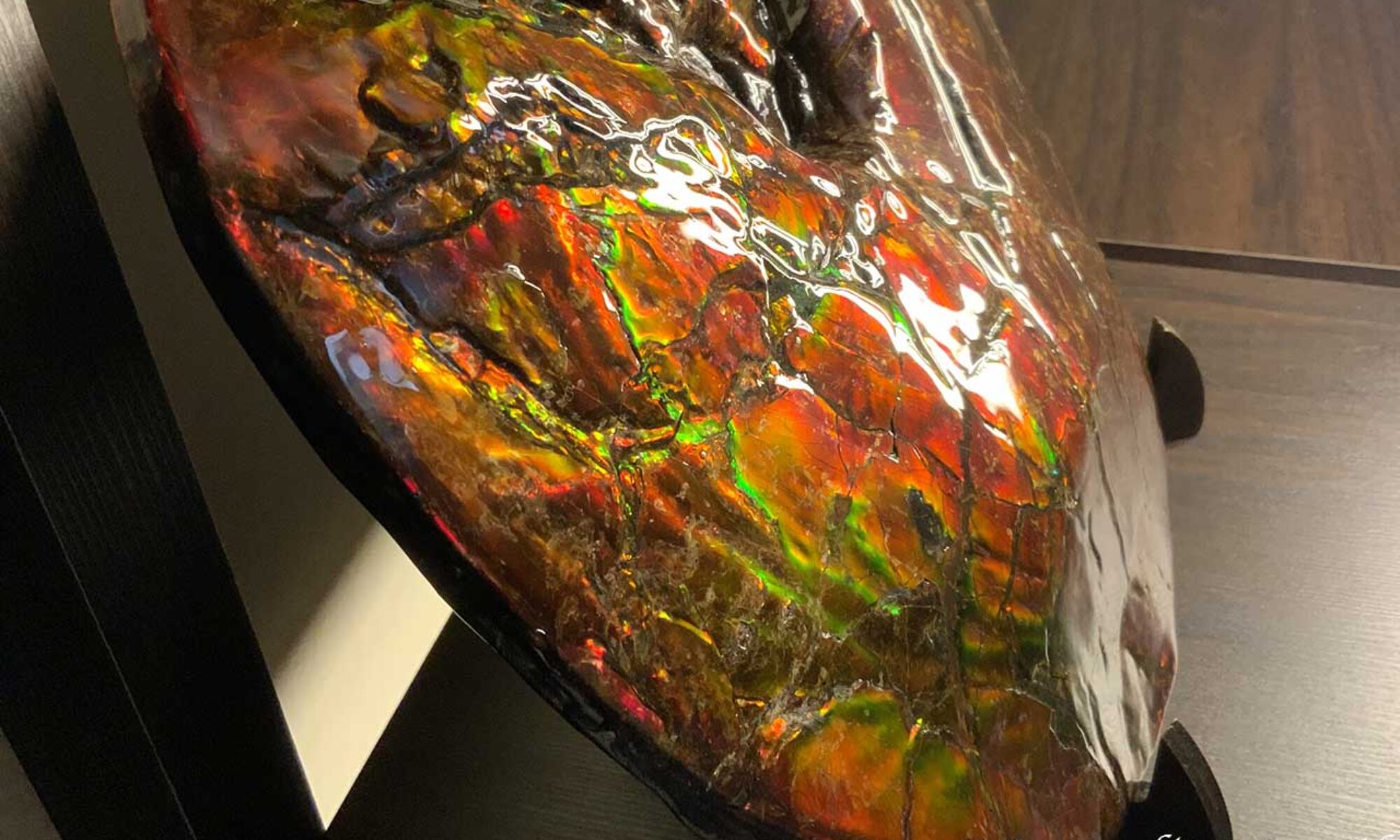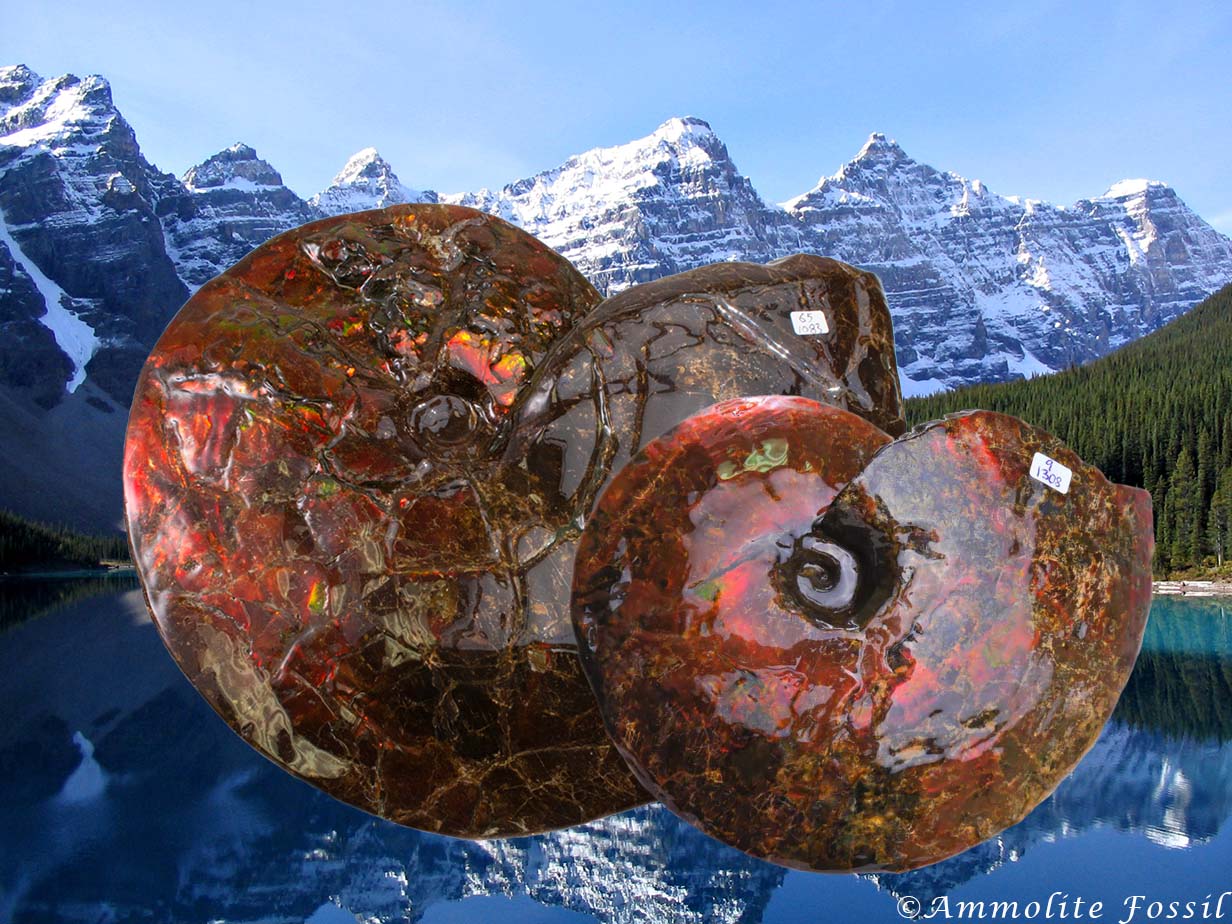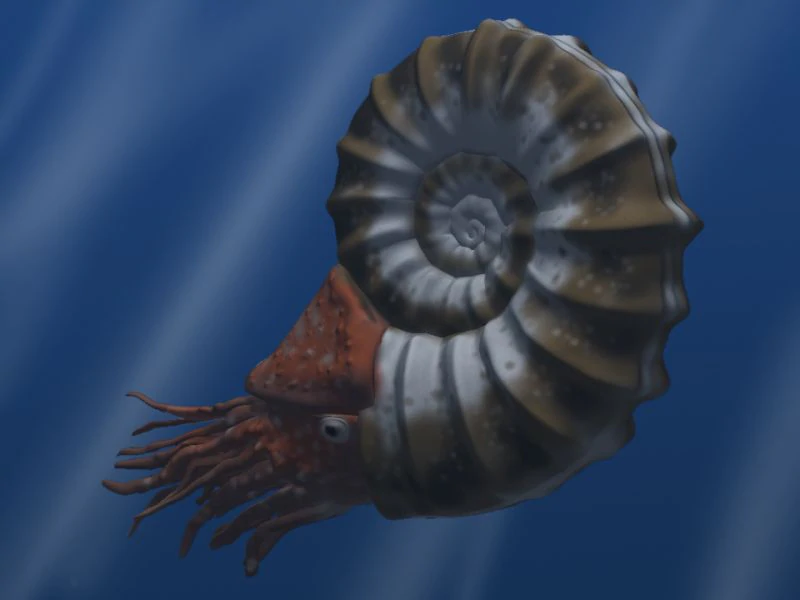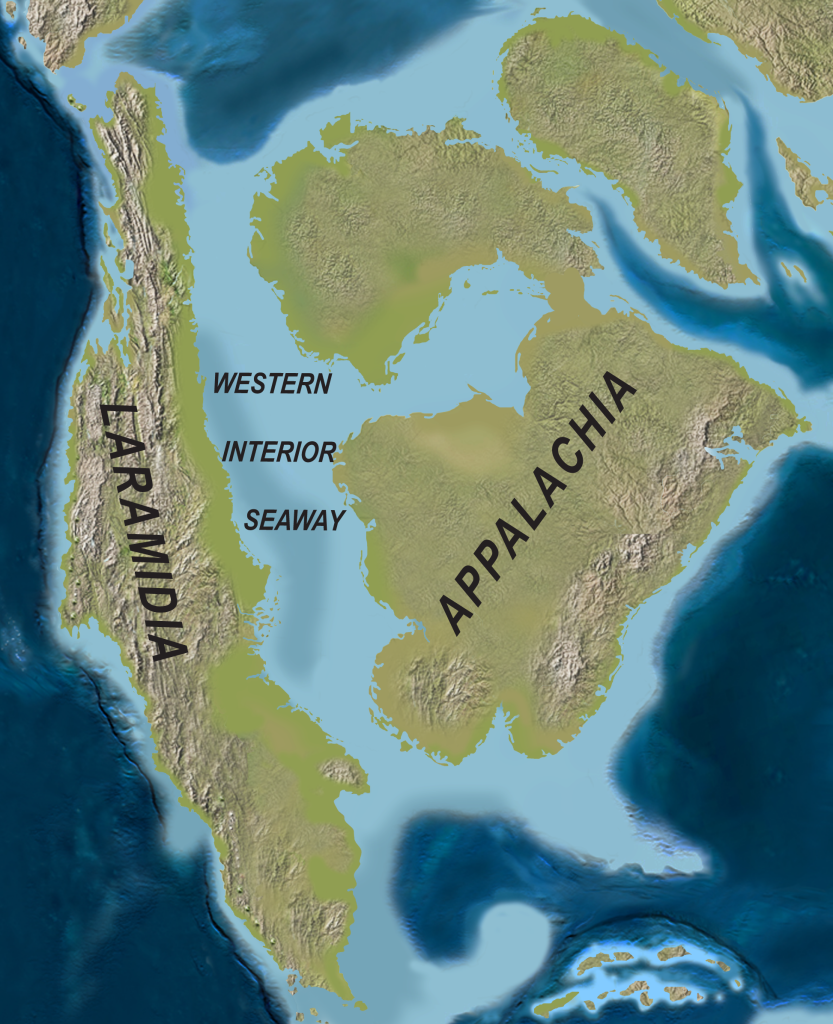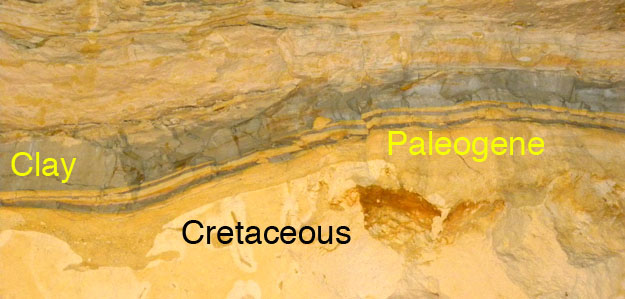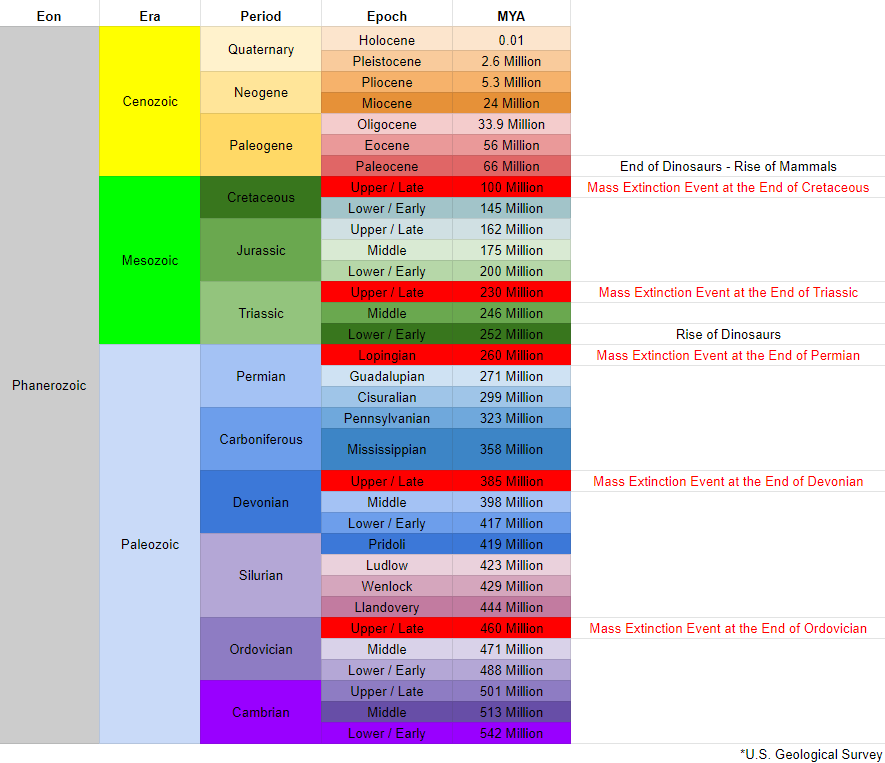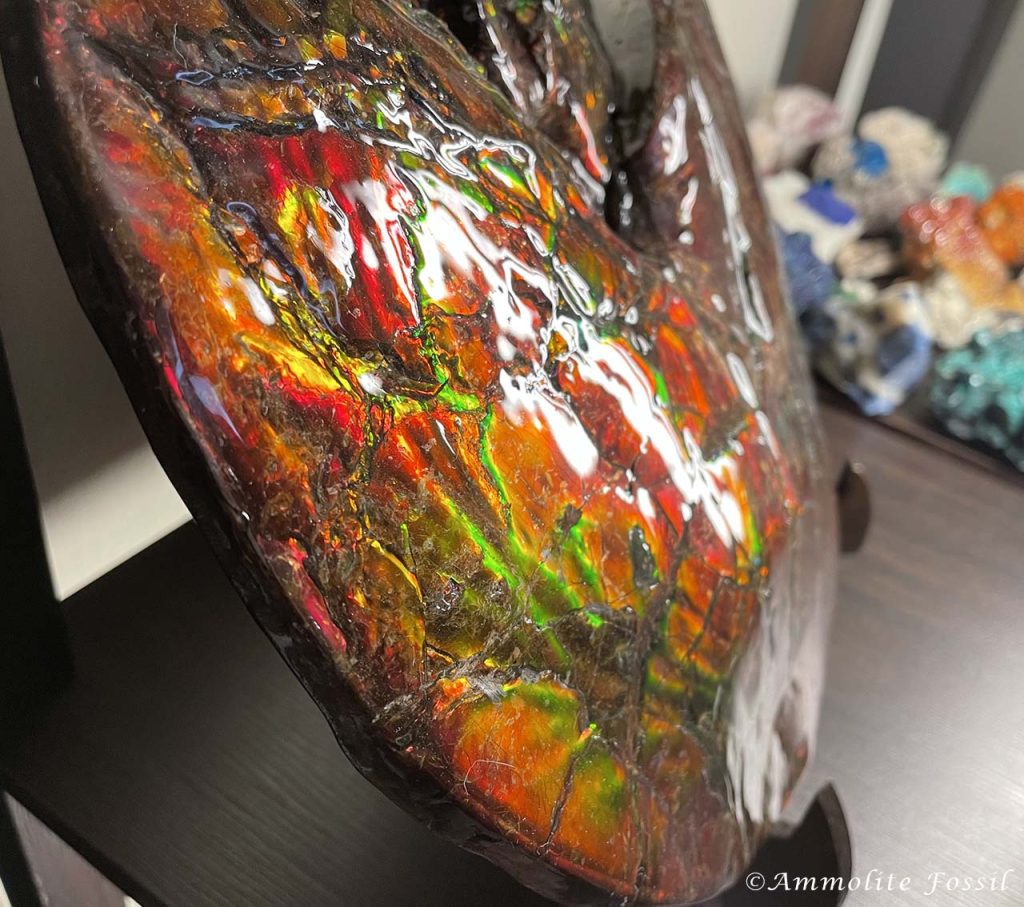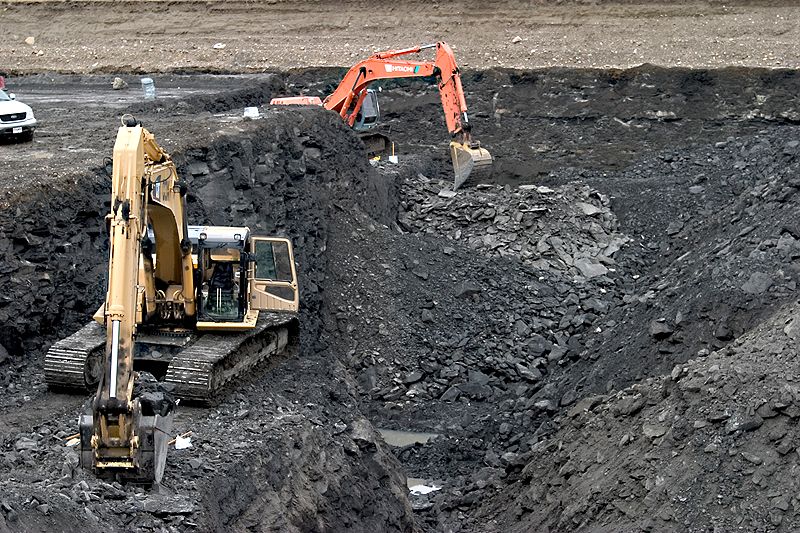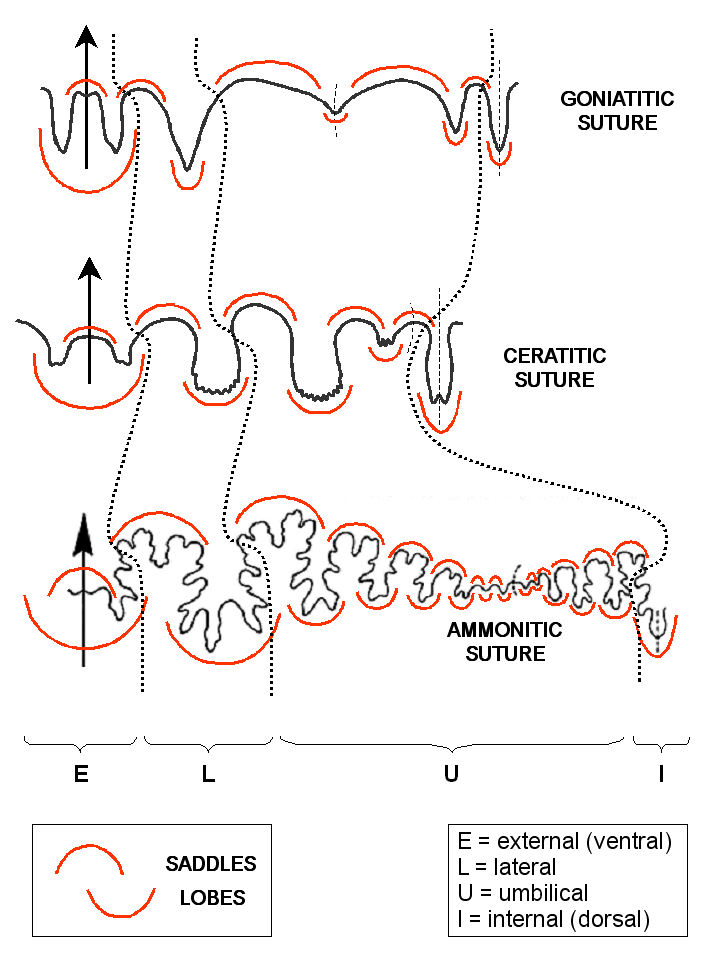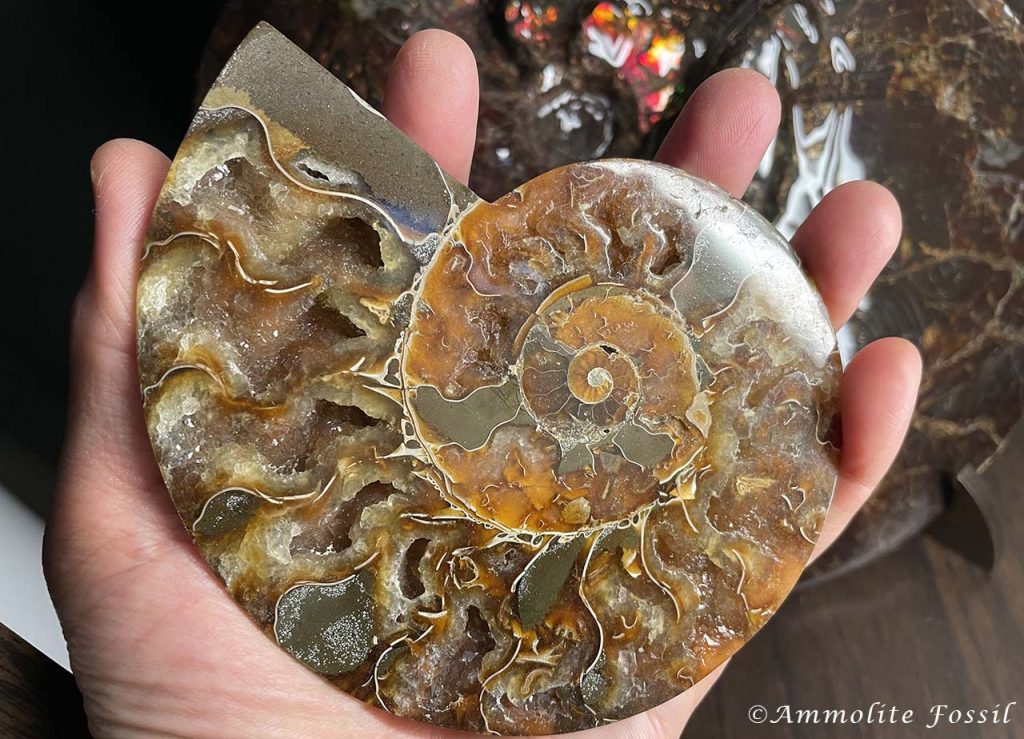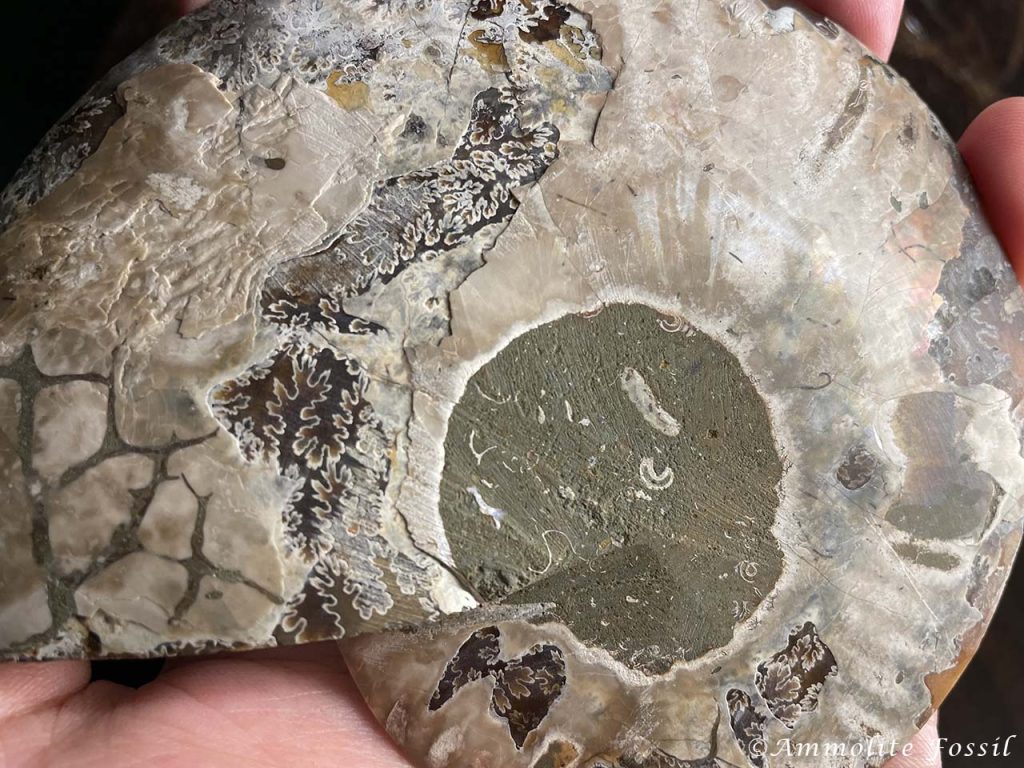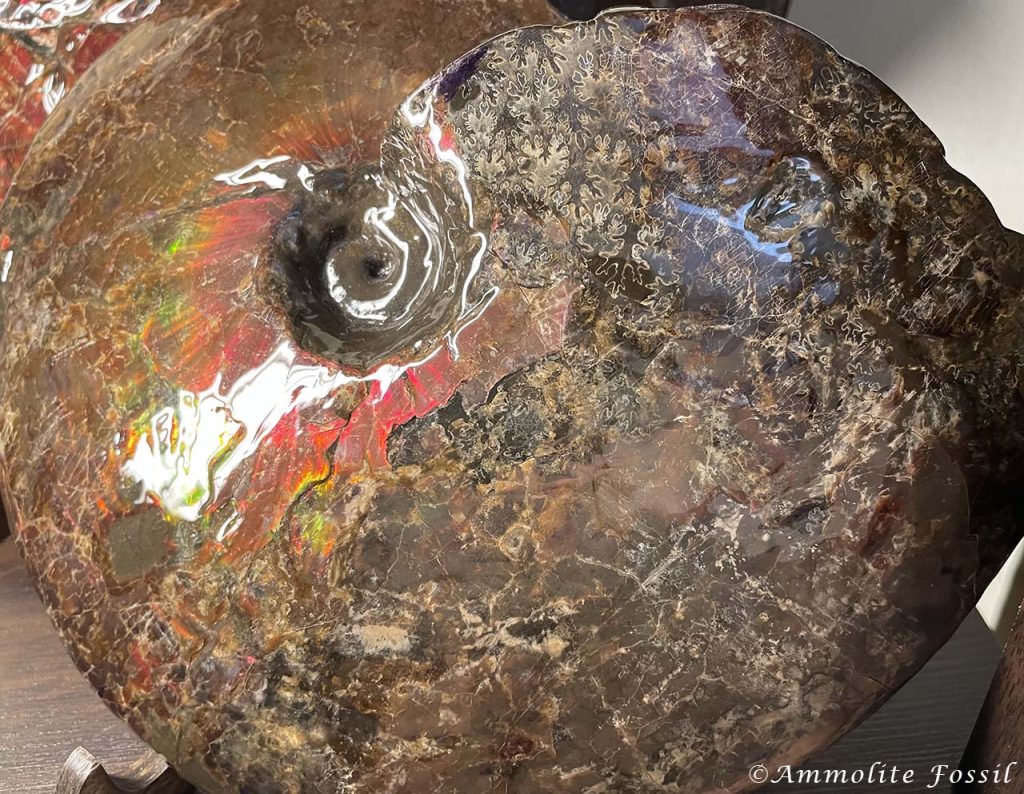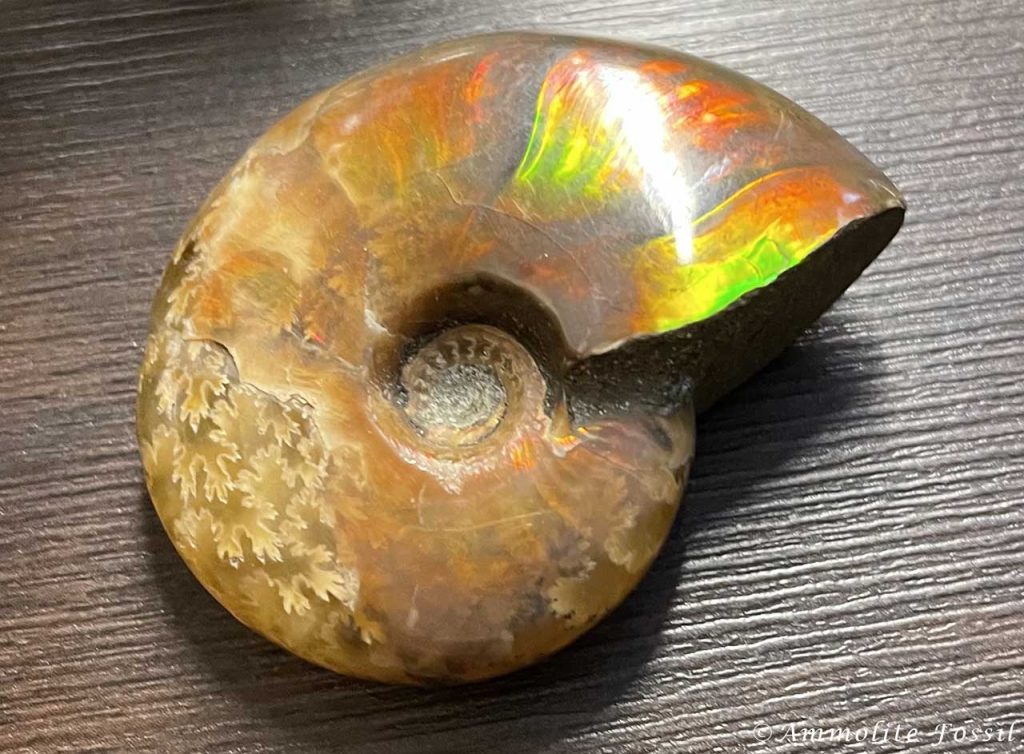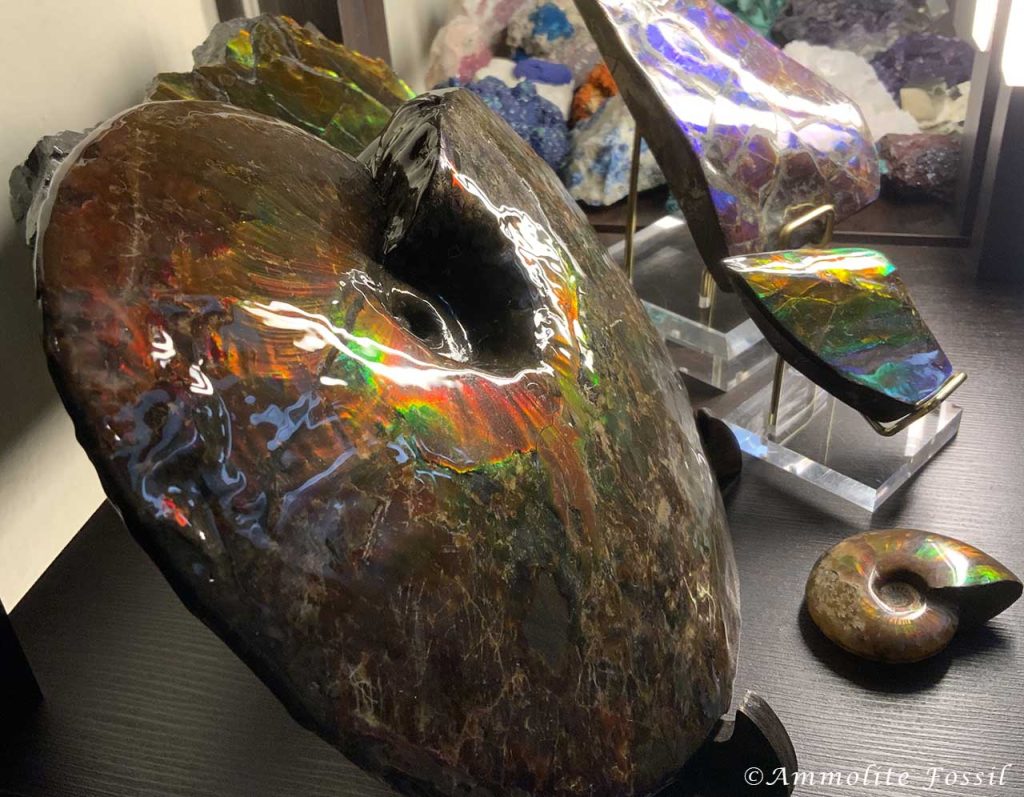Canadian ammonite fossils are rare and exceptionally scarce specimens unique to the Bearpaw Formation in southern Alberta, Canada. These extinct cephalopods are prized for their vivid iridescent display of colors on their fossilized shells called ammolite. Due to their beauty and scarcity, Canadian ammonite fossils are highly sought-after by museums and collectors world-wide. While ammonites with iridescence have been found elsewhere in Utah, Montana, Saskatchewan, England, Russia, and Madagascar. The depth of colors, brilliance, and vibrancy do not match those ammonite fossils found in southern Alberta, Canada.
Origin and Extinction
Ammonites first appeared during the Devonian period about 416 million years ago as Bactritida, or straight-shelled cephalopods. They survived three major extinction level events, most notably, the end of the Permian extinction event that wiped out 96% of all marine life. Each time ammonites evolved, they came back with more diverse species and new body structures. The Canadian ammonites we know of today came from the order Ammonitida. These highly evolved ammonoid cephalopods thrived from the Jurassic period through the end of Cretaceous. They hunted the shallow seas of the Western Interior Seaway, a large tropical inland sea that existed during the Cretaceous period. This ancient sea split the continent of North America into two landmasses.
The extinction of the ammonites, along with 2/3 of all animals including non-avian dinosaurs, has been attributed to the Cretaceous–Paleogene (K–Pg) extinction event 66 million years ago. It is believed that a large asteroid 10 to 15 kilometer in size (or 6 to 9 mi), crashed into Earth at Chicxulub on Mexico’s Yucatán Peninsula. The event was so devastating, it acidified the oceans, caused an ecological collapse, and produced long-lasting effects on the climate.
The K–Pg extinction event can be seen in geological records all over the world as the K-Pg boundary. It is marked by a thin layer of sediment with unusually high levels of the metal iridium, which is more commonly found in asteroids.
Recent studies show some ammonites may have survived the K-Pg extinction event, they’re called Paleocene ammonites. These ammonites lived for a short period of time during the Paleocene epoch, although none survived the Danian period (61 million years ago).
Canadian Ammonite – Geology
The Bearpaw Formation is located just east of the Rocky Mountains in southern Alberta, Canada. This geological location is famous for its well-preserved Canadian ammonite fossils. Ammonites were once living creatures that swam in the oceans millions of years ago. When they died, their shells sank to the ocean floor and were covered by sediments. Over time, the sediments turned into shale, and the ammonite shells fossilized and bonded with the shale. Today, visitors to the Bearpaw Formation can see the fossilized remains of these ancient creatures.
The Bearpaw Formation is unique in that it was formed during a time of intense plate tectonic activity and volcanic eruptions. The volcanic ash that settled and buried the ammonites preserved their shells so well that the aragonite on the shells did not turn into calcite. Over millions of years of heat, pressure, and mineralization, the conditions were just right for ammolite gemstones to form on the fossilized ammonite shells. The brilliant iridescence of ammolite on Canadian ammonite fossils is unmatched anywhere else in the world.
Mining Zones
There are two layers in the Bearpaw Formation where Canadian ammolite and ammonite fossils can be found; the K Zone, and the Blue Zone. The K Zone lies 15 meters below the surface, and extends 30 meters down. Ammonite and ammolite found in the K Zone are often crushed and highly fractured. The specimens in this layer are covered in siderite concretions, and they produce the most “dragon scale” ammolite with heavy matrix lines present. Most of the ammolite on the market is from the K Zone due to its ease of mining.
Roughly 20-65 meters further down under the K Zone is the Blue Zone. This zone is where they mine the highest gemstone quality ammolite and ammonite fossils. Specimens in this layer are covered by a layer of iron pyrite. This results in less pressure and less fracturing of the ammolite and ammonite specimens. The Blue Zone is where Korite finds what they would call “sheet ammolite”. These are specimens with the highest grade quality and the best iridescence.
Korite, the largest miner of ammolite, produces over 90% of the world’s supply of ammolite. Only 50% of the ammolite mined is gemstone quality, and out of those, only 3-12% are of AA and AAA quality gemstones. Korite practices ethical mining, and is certified by the Federal Department of Canadian Heritage. Once a mining operation is finished, the land is restored and reclaimed to its natural state.
Ready to purchase your own top grade Blue Zone Canadian ammonite fossil? Be sure to check out our Ammolite Buying Tips article. Use our referral code and get 15% off. This Korite coupon works for on sale items, take 15% off on top of existing low sales prices.
Canadian Ammonite – Species
There are three main species of Canadian ammonite fossils being mined in the Bearpaw Formation. These species are Placenticeras meeki (common), Placenticeras costatum (rare), and Placenticeras intercalare (rare). Placenticeras intercalare is highly sought-after by collectors due to their horns, or protrusions on their shells. It is a distinctive trait unique to Placenticeras intercalare species.
All Canadian ammonites can exhibit suture lines. Suture patterns indicate where the ammonite’s septa joins the outer shell-wall, showing you their complex gas chambers. These beautiful suture patterns are used to identify different species of ammonites. Over millions of years, suture patterns have evolved from simple lobes to complex shapes. This allows geologists and paleontologists to date the fossil specimens and the formations surrounding them.
Three major types of suture patterns are found in the Ammonoidea:
- Goniatitic – numerous undivided lobes and saddles; typically 8 lobes around the conch. This pattern is found on ammonoid cephalopods that form the order Goniatitida. These ammonites thrived during the mid Devonian about 398 million years ago. They survived the end of the Devonian extinction event, only to become extinct at the end of Permian.
- Ceratitic – rounded undivided saddles, with subdivided tips on the lobes. This suture pattern belongs to Ceratites, they are cephalopods that thrived during the Triassic period. This genus of ammonites was only found in the German Basin, a partially isolated shallow sea spanning across Europe at the time.
- Ammonitic – highly subdivided lobes and saddles, rounded with fluted patterns. This suture pattern is characteristic of Jurassic and Cretaceous ammonites, although they date all the way back to the Permian period.
In good polished specimens, suture patterns can be preserved and are prized by collectors. Important to note that these suture patterns could not be seen when ammonites were alive. They would be hidden on the inside of the outer-shell walls. Suture patterns in ammonite fossils are only exposed when the outer shells are worn off or polished.
Purchasing Canadian Ammonite
Ready to start collecting these magnificent Canadian ammonite fossils? Be sure to check out our Ammolite Buying Guide. There are a few things you need to know. The Canadian government considers the ammonites found in the Bearpaw Formation part of “the National Treasures of Canada”. In order to mine in the Bearpaw Formation, you must have a permit. All ammonites must be inspected and registered by the Alberta provincial government before they can be collected and sold. Once registered, each Canadian ammonite fossil will be assigned a number and be recorded in the provincial database. Prior to shipping an ammonite out of Canada, an export permit must also be obtained with buyer’s information recorded.
When purchasing a Canadian ammonite outside of Canada, be sure to ask for a certificate of authenticity. The ammonite should come with a government registration number, and an export permit. Some larger ammonite fossils from Madagascar can look like Canadian ammonites. Dishonest dealers have been known to sell “fake” Canadian ammonite fossils, because Canadian ammonites are valued much higher than ammonites from other parts of the world.
Purchase Canadian ammonite fossils from Korite, the leading supplier of high grade ammolite and ammonite. Use our referral code and get 15% off on your purchases from Korite.
The aragonite layer on Madagascar ammonites are not thick enough to produce gem quality ammolite. The color depths, vibrancy, and iridescence also do not compare to Canadian ammonite fossils. The lack of color play is also evident. Care must be taken as fraudulent dealers can be found both online on sites like Ebay, as well as in local mineral shows.
Canadian Ammonite Fossils – A Video Production
This is a well made video production explaining the origin story of ammolite. It includes interviews with members of the Blood Tribe as well as Korite. Highly recommended.
